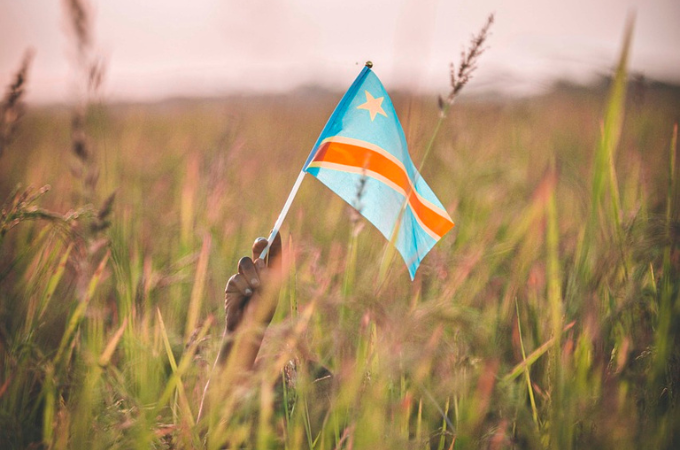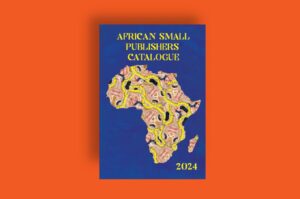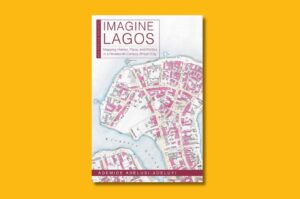
On December 5, 2023, The Atlantic published an article by their Senior Editor, Ross Andersen, with its original title, “War in the Congo Has Kept the Planet Cooler.” The article details how war and violence in the Democratic Republic of Congo may be the factor preventing the exploitation of the Congo rainforest at the rate of other forests around the world. The title of the article was later changed to “The Grim Ironies of Climate Change,” amid the justified uproar across social media platforms. Although the change was a step in the right direction, the approach of this article still possesses several shortcomings – among them the lack of regard for human life, a singular lens approach, and the failure to properly understand the complexity of the violence in the DRC – which make the article both misleading and dangerous.
Ethics and The Perversity of Disregarding Lives Lost
Andersen begins the discussion on the violence in Congo with King Leopold II, and follows on to discuss Mobutu and the assassination of Patrice Lumumba. Indeed, these figures and events are critical parts of Congolese history. However, they do not touch on the actual human cost of the wars that have occurred in the DRC. The cumulative death toll from all the Congo Wars and violence is now more than 6 million. In addition, close to 7 million people have been internally displaced from conflict, violence, and mining, whilst the UNHCR reports more than 1 million have sought asylum in other countries including Angola, Uganda, Tanzania, and Zambia.
An argument for war being beneficial for the climate without stressing the human casualties enables discussions that can be unethical and perverse. It implies that lives, African lives, are disposable in search of climate solutions. Moreover, it replicates the failure to see humans as part of the environment, and therefore cannot present a true advocacy where people are also included as part of the climate solution. If the way forward to save the environment is to kill people, then we need a deeper and immediate reevaluation to do things differently.
Andersen’s discussion on the Congo Wars makes the argument for how war has prevented the deforestation of the Congo forests, yet neglects to discuss the other facets of the war, such as exploitation of mines and wildlife endangerment. The notion that war reduces the human coordination to be able to do extractive damage to the environment is not grim irony, it is false. A likely reason for this shortcoming is the singular focus and missing engagement with the complexity of the Congo War – perhaps because, in this article, Andersen has departed from their extensive work within discussions on AI and health.
Multifaceted Approach
A multifaceted approach for the article research would demonstrate how war has allowed for several climate devastations – mainly from Illegal mining and smuggling, water, land and soil erosion.
In a report by International Peace Information Service (IPIS) and USAID, they explain that non-state armed groups use mines as part of their financing mechanism. In Ituri, the armed group Coopérative pour le Développement Economique du Congo (CODECO) invaded Mongbwalu Gold Mining (MGM) company’s concession in the territory of Djugu. With this invasion, CODECO forced miners to continue mining gold at the behest of CODECO. The gold produced from the region was exported through illicit channels for refining in Uganda and exportation to Dubai. Further, a 2017 report by UNEP noted alarming environmental outcomes including heavy metal pollution, land pollution, and increased deforestation from mining. Once a mine is no longer functional, repurposing the mined area possesses a high risk of soil and contamination. At the time of the report, 51 million Congolese did not have access to potable water.
Additionally, the continued violence and war provides cover for other violent acts, human rights and environmental protection abuses to occur in the DRC. A Global Forest Coalition article emphasizes that coltan mining remains among the leading factors for the continued deforestation in DRC, and that child labour practices continue to be upheld with more than 40,000 child miners. Additionally, there continues to be violent and forced eviction and displacement of local residents by different parties including government authorities, mining corporations, and armed groups.
Even if the environmental focus is on forestry and wildlife, war itself has led to the endangerment of flora and fauna in conflict prone areas. The pursuit of minerals – whether legal or illegal, as in this case of conflict minerals – requires land space and encroaches on wildlife habitats. The IPIS-USAID report states that as part of their financial mechanisms, some armed groups commit illegal logging for redwood trades leading to further deforestation. In the DRC, the continued violence and insecurity has also created a severe barrier to the revitalization of national parks and the efforts to protect animals from endangerment and extinction.
The Gorilla Fund reports that the Grauer gorilla population decreased by nearly 80% over the past two decades, bringing them closer to extinction. This is further reaffirmed in the 2017 UNEP report that even with the vast biodiversity, 190 species (including elephants and mountain gorillas) are critically endangered, endangered or vulnerable on the IUCN Red List of Threatened Species.
Andersen rightly calls for Congolese leaders to protect the forest from being pilfered by corporations, but that needs to be underscored with data. To what extent will the leaders be able to protect the forest’s flora and fauna when there continues to be gaps in data preventing proper analysis of exploitation and conservation? Essentially, where is the data to support this position?
Violence prevails in rainforests
Whether intentional or by omission, Andersen presents the other rainforest like the Amazon as peaceful. This leads to a misinterpretation of their situation. While the Congo War(s) – plural as many scholars including Benjamin Babunga Watuna have determined – may have higher casualties, violence still occurs in other forest regions. The world’s largest rainforest, the Amazon rainforest, is reported to have higher homicide rates than the regional averages of Latin America and the Carribbeans. The Crisis Group states that the Amazon territories:
are host to legal and illegal logging and mining, coca cultivation and drug trafficking suffer both the worst ecological damage and the most violence. These areas often overlap with the ancestral lands of Indigenous peoples, who historically have played a crucial role in safeguarding the rainforest.
The writing approach and its impact
The Atlantic was founded in 1857 and the founders and writers at the time were outspoken against the injustice and violence of slavery. As part of The Atlantic’s origin that it prides itself on, this article is disappointing. It does not echo the founders’ ethical stance on injustice and violence. In some ways a part of the global community spoke to this with their collective response to the title. However, more needs to be done with this article than just changing the title.
Established, recognised platforms like The Atlantic have a duty to publish their best and close to accurate work as possible, especially when such work can set precedent for arguments and debates that are unethical and perverse. Andersen’s article, maybe not today, but in five, ten, twenty years time, can be used as grounds for an extremist ideal that proposes the benefit of war being the preservation of the climate.
A different angle – what could have worked?
Andersen could have written this article to encourage the Congolese community to protect the Congo forest once there is greater stability and to offer thorough recommendations on how to do this. The current article by Andersen, however, is disconnected from the reality of the DRC and the growing global outcry on the continued injustices. A more suitable article could have been an outlook on how corporations have failed to support the climate agenda, and a guide to how countries like the DRC should not fall into similar situations that other rainforest nations have experienced. Essentially, anything that did not suggest the notion that, in some way, the loss of more than 6 million lives and the displacement of more than 9 million people is beneficial – even if it is the climate.
Photo by consolersafari from Pixabay










COMMENTS -
Reader Interactions